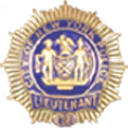
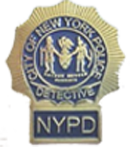
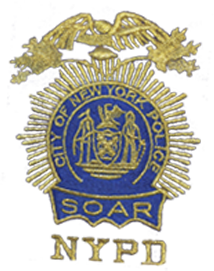

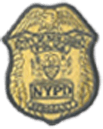
List Of NYPD Holiday Party Events
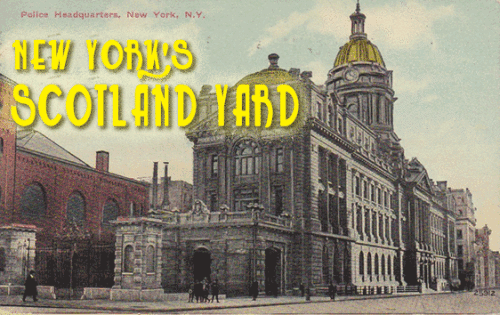
Location: 240 Centre Street
Status: Landmarked (click for landmark report)
For over sixty-four years, police officers called it the big white castle, the nerve center of the nation’s largest and most sophisticated police department. Over the years, the New York City Police Department’s Centre Street headquarters would combat mobsters, bootleggers, jewel thieves and serial killers.
Built by the architectural firm: Hoppin, Koen and Huntington for approximately $750,000, Old Police Headquarters, or the Central Office as it was once called, represents one of the most beautiful Beaux-Arts masterpieces Manhattan has to offer.
The architect, Francis Hoppin stated:
“The building was not intended to look like a police station, but was inspired by the dignity of City Hall, the handsomest building on Manhattan Island… designed to impress both officer and prisoner…with the majesty of the law.”

The New York City Police Department headquarters stood at 240 Centre Street from 1909 to 1973.
Built between 1905 and 1909 on a wedge shaped parcel of land bounded by Grand, Centre and Broome Streets where the old Centre Market had stood since 1817, the new Headquarters was needed following the consolidation of the five boroughs in 1898, when the police force quadrupled in size.
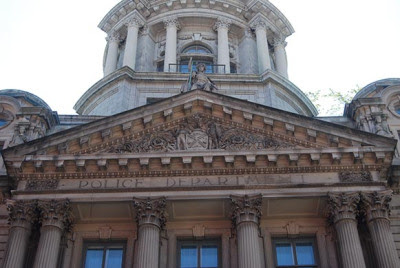
On midnight November 29, 1909, Police Commissioner William F. Baker inaugurated New York’s era of scientific policing when telephone switchboards at the old police headquarters at 300 Mulberry were simultaneously shut down and transferred to the new Central Office.
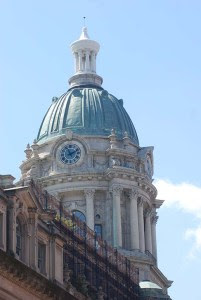
On the first floor of 240 Centre Street, visitors would find an ornate reception room. To the left of reception, guests could find the Chief Inspector’s office, the Bureau of Information and the Boiler Squad, a NYPD unit responsible for testing steam heaters in buildings throughout the city.
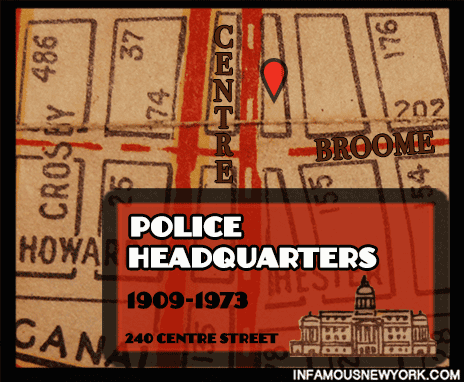
The old New York Police Department headquarters was located at 240 Centre Street. To the right of the reception room, the chief detective’s office could be found next to the line up room for criminal suspects, the homicide room and Lt. Giuseppe “Joseph” Petrosino’s famed Italian Squad.
The Italian Squad
Formed to investigate the growing threat of a criminal organization known as the Black Hand, Lt. Petrosino and his Italian speaking squad uncovered the existence of a secret criminal society known as the Mafia lurking in the shadows of New York’s Little Italy. Assassinated while investigating the Mafia in Sicily, Petrosino never had the chance to see the new Police Headquarters.

After the assassination of Joseph Petrosino, Michael Fiaschetti took command of the Italian Squad at 240 Centre Street. Petrosino’s second in command, Michel Fiaschetti ran the Italian squad from 240 Centre street well into prohibition when the unit was disbanded. In addition to combating the Mafia, the Italian squad developed the nation’s first bomb squad to defuse bombs planted to extort Italian shopkeepers.
On the Second floor of Police Headquarters was the Commissioner’s office and the Bureau for Theatrical Licenses. On June 10, 1970, a bomb planted by the Weathermen exploded in a bathroom on the floor, blowing out windows and injuring eight people. (Click to read the story)
Another flight up was the Chief Clerk’s offices and a police science library, a room stocked with the most up to date texts on investigation, forensics and criminal identification.
The Police Academy
Housed on the fourth floor, the City’s Police Academy operated at 240 Centre street until it moved to 400 Broome Street in 1928. The facilities included a gym, a drill room, heavy bags and a running track.
The NYPD’s Nerve Center
The fifth floor existed as the Police Department’s nerve center, housing a sophisticated switchboard and dispatch system for the entire city. According to the New York Evening Post:
“The Switchboard is the most complete and costliest in the world, and every known improvement in telephones will be found there.” —New York Evening Post

Equipped with the latest technology of its time, the switchboard room was located on the 5th floor of 240 Centre Street.
Nearby in the Bertillon room, officers photographed and meticulously measured and recorded different parts and components of known criminals’ bodies. Their findings were then printed on 5”X3” index cards, an early system of criminal identification, and sent to the Old Police Headquarters’ Rouges Gallery. Fingerprinting eventually replaced the Bertillon system.

The Rouges Gallery in 240 Centre Street. After criminal identification cards were created, the documents were stored here.
Secrets Beneath 240 Centre Street
The cellar boasted a pistol shooting range, the property clerk, 72 cells for high profile Detective Bureau prisoners, and most notably a secret tunnel. During prohibition, officers went to great lengths to get their drink on, digging a tunnel under Centre Street to O’Neill’s tavern so that the coppers could drink in uniform. Parts of the tunnel live on today as a wine cellar.
Gun Dealer’s Row
Almost overnight, gunsmiths and gun dealers sprouted up behind headquarters on Centre Market Place where officers could buy guns, billy clubs and uniforms. Famous gun dealers such as John Jovino and Frank Lava operated here for many years. According to the Village Voice:
“At one time, six gunsmiths—all Italian—operated out of storefronts along that block, A few yards down Broom Street, a single German plied the trade”—The Village Voice (click to read the article)
The Police Department officially closed 240 Centre Street in 1973, moving headquarters to 1 Police Plaza. Rather than relocating the historic records into an archive, the department unceremoniously dumped a half-century worth of police records into the East River. Headquarters was later converted into a luxury apartment building named the Old Police Building.
